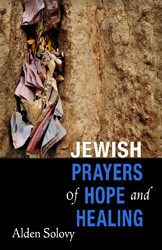In the preface to Halleli Nafshi, Rabbis Bardack and Naditch express their hope that their siddur will help children “find their way in tefillah.” They fulfill their intention in a number of creative ways. For one, they insert child-friendly translation to prayers, focusing on the primary message of each prayer rather than on the complex, poetic, oft en hard-to-understand language of the traditional siddur. With the exception of the prayer Avinu Malkeinu, they opt to reflect the image of God as anthropomorphic, in order to ensure that every child can envision him- or herself in the image of God without gender as a barrier. “(W)e are committed to helping children envision a God that is neither male nor female,” they write.
The hardcover siddur is filled with art made by children in grades two and three at Solomon Schechter Day School of Greater Boston, and the art is placed to match the tone and meaning of each prayer. The siddur has a companion CD which is intended to be a teaching tool so students can learn the melodies and tunes of the prayers while they are using the siddur.
The siddur is by no means comprehensive and the Grace After Meals prayer is one example of a set of prayers that is incomplete and features only some of the blessings traditionally included in Birkat HaMazon. Nevertheless, this siddur is wonderfully colorful, intensely child-friendly and a great daily resource for children embarking on their journey of tefillah. Halleli Nafshi is an ideal teaching tool for young children and a good resource to have in any Jewish home where children are engaged in Jewish learning. Bardack and Naditch are to be commended on assembling a siddur geared to children and making it easy to understand and a pleasure to use. Recommended for ages 5 – 10.





